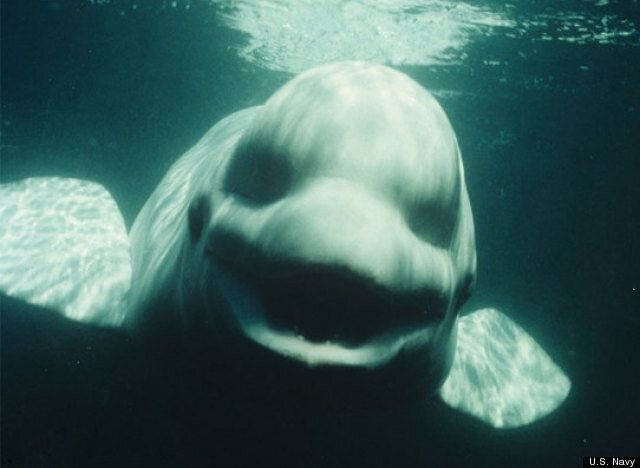A beluga whale has tried to copy human speech, according to scientists.
The sounds were first identified when a diver at the National Marine Mammal Foundation in California came to the surface saying “who told me to get out?” mistaking the mimcry of the whale for human speech.

There have been a number of stories of 'parrot-like mimicry' by whales such as the white whale
An investigation identified the whale, called NOC, as the source of the sounds.
Previously staff at the National Marine Mammal Foundation had reported hearing strange noises reminiscent of a distant conversation between two people.
NOC had been at the centre for seven years and lived with several dolphins and two older female white whales.

NOC was trying to imitate human speech
Research showed that in order to "talk" he varied the pressure in the nasal cavities beneath his blow-hole.
The result was a stream of song-like sounds very different from the clicks and whistles whales normally use to echolocate and communicate with each other.
Recording the sounds revealed a rhythmic pattern of wave forms and frequencies similar to those of human speech.
Dr Sam Ridgway, from the National Marine Mammal Foundation, said: "Our observations suggest that the whale had to modify its vocal mechanics in order to make the speech-like sounds.
"Whale voice prints were similar to human voice and unlike the whale's usual sounds. The sounds we heard were clearly an example of vocal learning by the white whale."

NOC died five years ago after 30 years at the National Marine Mammal Foundation.
The scientists' findings are reported in the journal Current Biology.
There have been previous anecdotal stories of parrot-like mimicry by whales.
On one occasion a keeper at Vancouver Aquarium in Canada, claimed he heard a white whale utter his name, "Lagosi".
Other sounds made by the whale were described as "garbled human voice, or Russian, or similar to Chinese".
Another case involved two juvenile killer whales that mimicked the barks of sea lions.
The scientists studying NOC trained him to "talk" in return for a reward. Recordings were made from both above and below the surface of the water.
NOC would have heard human speech both from above-surface speakers and divers' underwater communication equipment, said the researchers.
Although his attempts at speech could be heard underwater, they only occurred when he surfaced and his blowhole was exposed to the air.
To learn how he made the sounds, the researchers taught NOC to accept pressure sensors inserted by catheter into his two nasal sacs.
They showed that the production of speech-like sounds involved marked inflation of first one and then the other nasal cavity.
The technique employed was complex, requiring simultaneous muscular adjustments and considerable effort, said the scientists.
They wrote in their paper: "We do not claim that our whale was a good mimic compared to such well-known mimics as parrots or mynah birds. However, the sonic behaviour we observed is an example of vocal learning by the white whale.
"It seems likely that NOC's close association with humans played a role in how often he employed his human voice, as well as in its quality."
NOC's chattering, which began in the 1980s, reduced after about four years and stopped altogether once he was fully mature.
Every case of whale mimicry reported to date has involved young animals, said the scientists.
NOC died five years ago after 30 years at the National Marine Mammal Foundation.